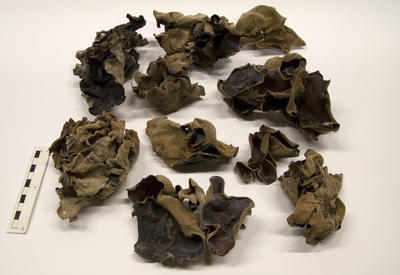Fungus, Wood Ear
Description
12 pieces of dried wood ear fungus. The underside of each piece of fungus is pale brown and slightly furry. Some pieces have raised veins on the underside. The top side of the fungus is darker brown and smooth. Some pieces have a more reddish tinge, whereas some are more of a blue-grey in colour. Many of the pieces have specks of dirt on the surface or remnants of wood from where the fungi were removed from the trees they were growing on.
See full details

Public comments
Be the first to comment on this object record.